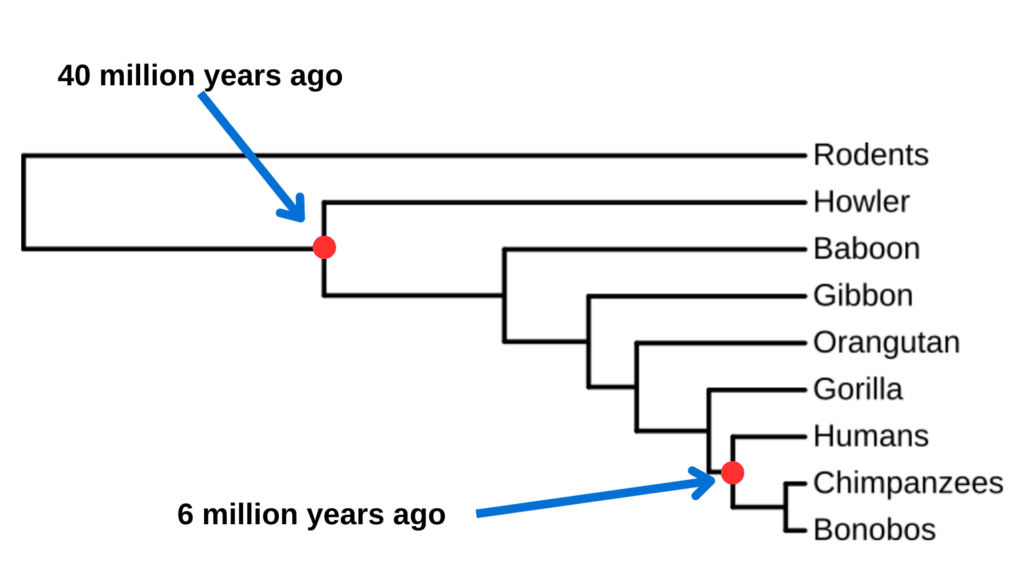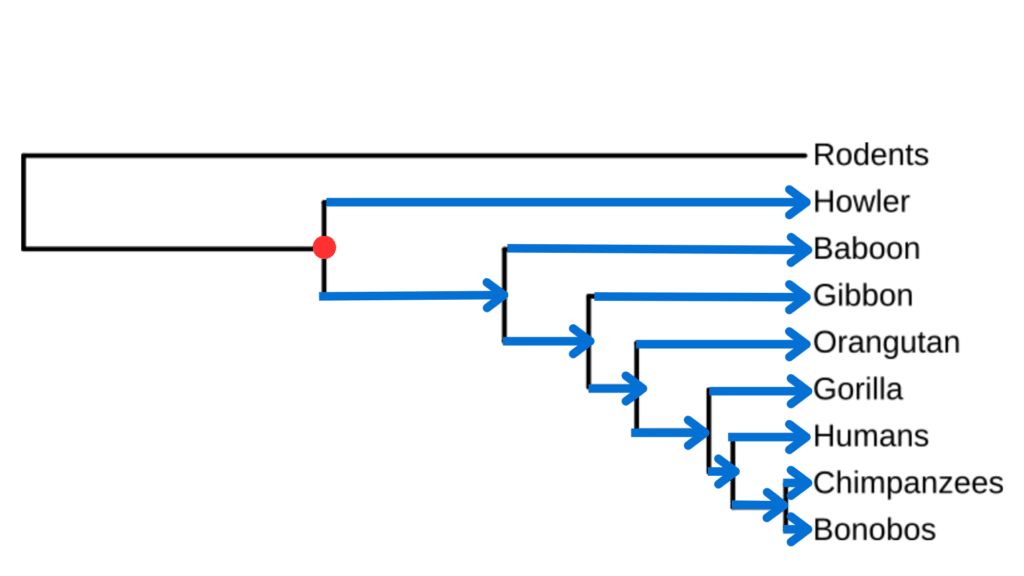How Information Flows on a Phylogeny
When we read a phylogenetic tree we typically read it from the root to the tips. Remember, the more internal a node is on the phylogeny, the further back in time that node is. For example, on the below figure we can see that the common ancestor for all the primates was found 40 million years ago, while the common ancestor for humans, chimps, and bonobos occurred 6 million years ago. If we are reading our phylogeny from the roots to the tips, we are reading it from the past into the present.

This fact has some important implications.
First, tips are incapable of having any direct influence on other tips. For example, the genetic information contained within the Howler Monkey tip, does not directly influence the information contained within the Gorilla tip. This is because information would need to flow from the tips to the root of the tree. The only way this would be possible is if the Howler Monkeys invented a time machine!
Nodes however can influence other nodes, by way of the most recent common ancestor (MRCA). We know the common ancestor for humans, chimpanzees, and bonobos influenced all three species, because we are very similar to chimpanzees and bonobos!
Thus, it stands to reason the MRCA of Gorillas and Howlers, then influences all the nodes and tips downstream from that node. Including our most recent common ancestor with chimpanzees, and by virtue of relation, ourselves!
Remember, at some point in time, those internal nodes were themselves tips which diverged over into the tips we see today!

We also see that information does not flow to the rodents tip. Information is not flowing backwards in time. This further demonstrates that the flow of information on a phylogeny runs from root to tip. Like water flowing in a real tree pulled from the ground by the roots, and then pushed up the trunk, into the limbs, and finally to the tips of the tree. In this same way, information flows on a phylogeny.
NOTE: At this stage of learning tree reading, we are simplifying things slightly. As is necessary with any educational endeavor. As you continue your studies, you will invariably find examples that bend these generalized rules. For example, hybridization would be a potential way for tips to directly influence the evolutionary history of other tips, regardless of their shared ancestry. However, the phylogenies presented here do not capture that nuance. These types of phylogenies exist and are called reticulated phylogenetic networks. However, even in these reticulate phylogenies information still runs from root to tip and never goes backwards in time.
You may be curious then about forces such as natural selection between species, where 2 tips in the same geographic area may interact and influence each others evolutionary history. The key difference here is direct vs indirect influence. Individuals interacting with one another are technically speaking INDIRECTLY affecting the genetic information contained within the tips. Rodents may steal food from Gibbons or transfer diseases, but they are not transferring genetic material between one another. These interactions undoubtedly have an influence on the phylogenetic relationships, but then too does every component of an organisms environment and daily existence!
I encourage curious minds to find possible exceptions and explore them fully! Often, you’ll find a deeper understanding and appreciation for evolution by virtue of teasing apart your thought process. Even more so when your studies prove your initial hypothesis incorrect!

